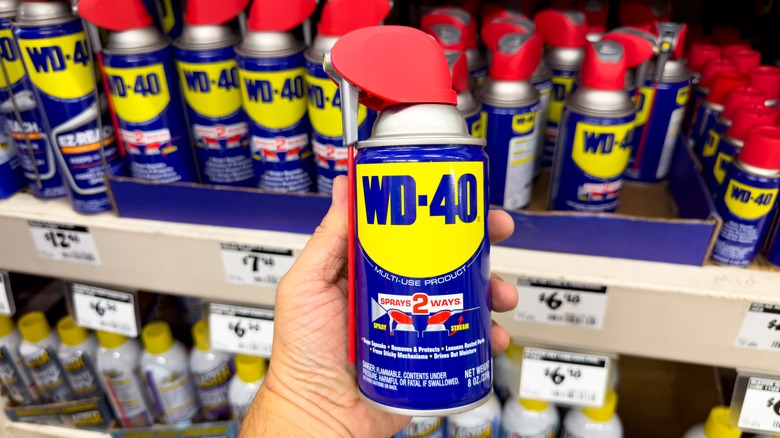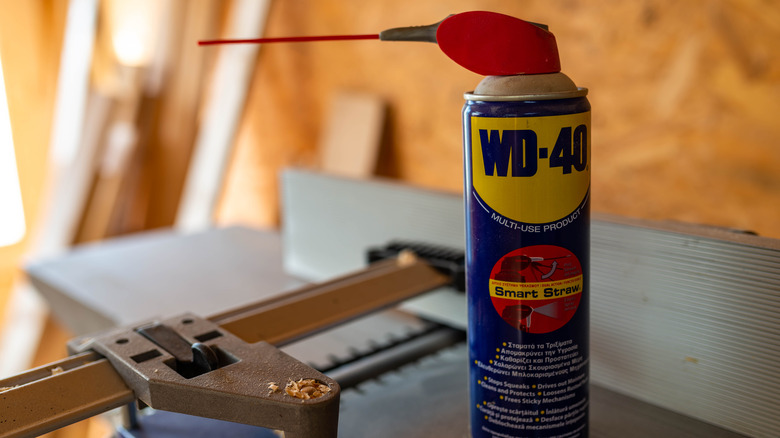Does WD-40 Go Bad? Here's How Long A Can Is Good For
WD-40 is famous for a reason. It's the go-to lubricant spray for a wide range of applications, some which you may not even consider. But as ubiquitous as it may be, WD-40 isn't a miracle product. It still has a shelf-life, meaning you won't get the same results from an ancient can after many years. At least, you won't get the same results if you don't store it properly. There's also plenty of mistakes you can make when using WD-40, and not every WD-40 product serves the same purpose.
According to the official WD-40 website, a can of your standard spray has a shelf life of "5 years from the date of production." However, this is the official shelf life. Because the company needs to cover all its bases on the legal front, this declaration of a 5-year shelf life is potentially an underestimation. A can of classic WD-40 will almost certainly prove effective well after 5 years on the shelf. In fact, the WD-40 Company itself even admits that, "product will often dispense and perform as expected for considerably longer."
So the short answer to the question, "Does WD-40 go bad?" is yes. However, the long answer involves a number of factors, such as its storage environment and how you define "gone bad." If you want to keep your classic can of WD-40 working well for years, we have some tips.
How WD-40 can go bad, and how to make it last
While some sources claim that a can of WD-40 has an indefinite shelf life, that's not entirely correct. Indeed, the product can last a long time, but that depends entirely on how you store it. In certain conditions, the compound inside the can may evaporate, and it can even dissipate to a point where it won't dispense when you press the tab.
To avoid this, look at its famous red cap. Make sure the cap is securely affixed atop the can, since this helps create a pressurized seal that prevents leaking over time. If your can doesn't have a cap, ensure that the straw is removed once you're done using it. You can look up Rault's Law if you're questioning the mechanics.
Furthermore, temperature makes a big difference. The company recommends storing the can at a temperature between four and 54 degrees Celsius (about 39 to 129 degrees Fahrenheit). This recommended temp range is primarily to avoid the risk of fire, since WD-40 can ignite if not properly stored. As you might have guessed, however, volatile substances such as this are also prone to dissipation over time, adding further credence to keeping the cap on tight. An ineffective valve will almost certainly expedite the product's decline, so check the valve if you're lamenting your WD-40's short shelf life.
If your WD-40 is stored at a moderate temperature and well-sealed, it should last beyond its 5-year shelf life. It's impossible to say how long exactly, as the company's "5-year shelf life" claim is likely stated for liability reasons. But considering the wide temperature range in which WD-40 may be stored, it can be simple to keep your can of WD-40 fresh and ready for use.

